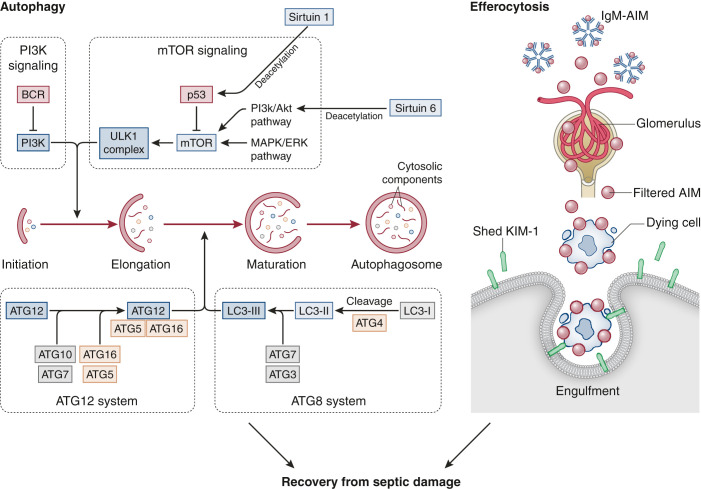Figure 5.
Autophagy and efferocytosis. Boosting autophagy or efferocytosis has the potential to protect kidney cells against septic damage. Autophagic flux consists of a variety of proteins such as ATG12-ATG5-ATG16L system and the microtubule-associated protein 1 light chain 3 (MAP1LC3 [LC3]) system. Among these factors, LC3 and autophagy-related gene 7 (Atg7), which are involved in the maturation of an autophagosome, are suggested to ameliorate lung and kidney injury during sepsis, respectively. Sirtuin 6 and deacetylated p53 by sirtuin 1 facilitate the elongation of a phagophore, and their activation also leads to kidney protection. As well as autophagy, efferocytosis can provide anti-inflammatory effects via the removal of dying cells. During AKI, apoptosis inhibitor of macrophage (AIM) dissociated from IgM is filtered through the glomerulus followed by the binding with dying cells. The complex of AIM and dying cells then interact with kidney injury molecule–1 (KIM-1) expressed on the tubular cells. Cells engulf these complexes, which attenuates sepsis-induced damage. BCR, B cell receptor; PI3K, phosphatidylinositol 3-kinase; mTOR, mammalian target of rapamycin; ULK1, unc-51 like autophagy activating kinase; MAPK, mitogen-activated protein kinase; ERK, extracellular signal–regulated kinase.

